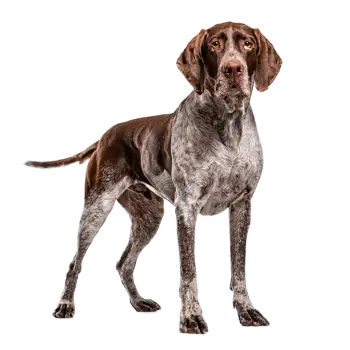The Danish Pointer is known by several names that reflect its origins and purpose. The breed's official designation is the Old Danish Pointer, though it is also referred to as the Old Danish Pointing Dog, Gammel Dansk Hønsehund (in Danish), and the Old Danish Bird Dog. In German-speaking regions, the breed may be called the Altdänischer Vorstehhund. The name "Gammel Dansk Hønsehund" translates literally to "Old Danish Hen Dog," which describes the breed's primary hunting function of pointing galliform birds, particularly pheasants and other game birds of the family Phasianidae. Unfortunately, this has sometimes been mistranslated to "Old Danish Chicken Dog," which is technically incorrect but occasionally appears in English references.
Historically, the breed was also known as the Bakhound, named after Morten Bak, the man credited with developing the breed in the early 18th century. Through eight generations of selective breeding, Bak crossed local Danish farm dogs with gypsy dogs to create the distinctive white and brown piebald hunting dogs that would become the foundation of the modern breed. This historical designation as Bakhound occasionally appears in older breed literature and records from Denmark.
The Danish Pointer achieved official recognition from the United Kennel Club in 2006, marking an important milestone for the breed's international standing. The Fédération Cynologique Internationale (FCI), the world's largest federation of kennel clubs, recognizes the breed under Standard No. 281, classifying it in Group 7 (Pointing Dogs), Section 1.1 (Continental Pointing Dogs, Braque type). Despite its long history dating back to the 1710s, the breed remains relatively unknown outside of Denmark and Scandinavia. The American Kennel Club does not currently recognize the Old Danish Pointer, though several breeds of pointers are included in their Sporting Group.
In Denmark, the breed experienced near-extinction during the mid-20th century but was saved through dedicated conservation efforts beginning in the 1940s. The Society for the Old Danish Pointer was formed in 1947 to preserve and promote the breed. A surge in popularity occurred in the 1980s following the Danish television nature show "En Naturlig Forklaring," which featured a beloved Old Danish Pointer named Balder. Today, while still considered rare internationally, the breed maintains stable numbers in Denmark, Germany, Holland, and Sweden where enthusiasts appreciate this distinctive Scandinavian pointing dog.

